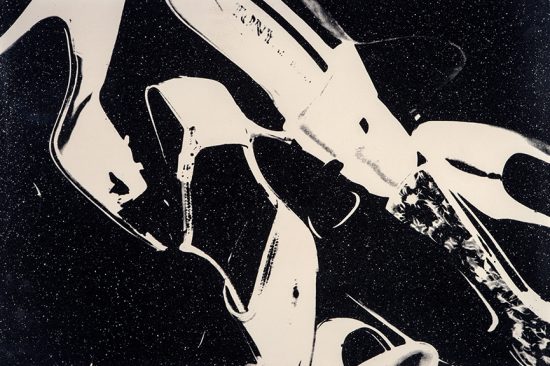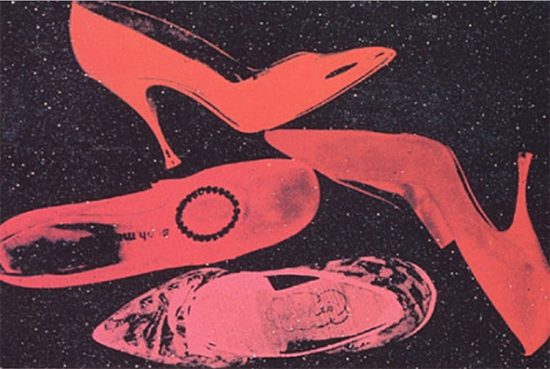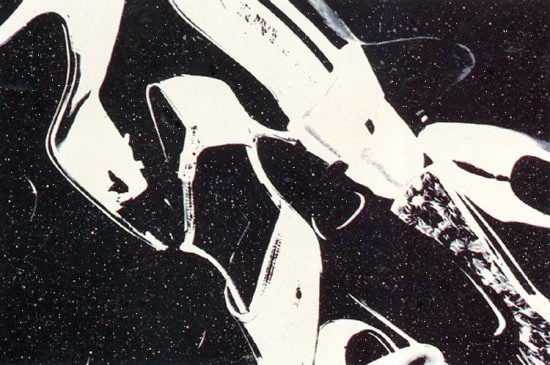In 1980, Andy Warhol created a portfolio of five screenprints titled Shoes. The works feature pairs of women’s high heeled shoes, in different positions and colors, and each print was dusted with diamond dust. The prints evoke visions of a starry night sky with sparkly diamond dust sprinkled over an inky black background. The composition and positioning of the shoes also remind the viewer of an x-ray scan, as Warhol creates a translucent and two-dimensional effect for the shoes. Warhol’s choice to use high heels as his subject was not random and makes sense within the context of his artistic influences. Warhol is perhaps best known for his portraits of Marilyn Monroe and other celebrities, as he was obsessed with American pop culture and fame. In the 1960s he became well ingrained in the counterculture scene in New York City, and his studio, known as The Factory, was the place to be for well known artists, musicians, actors and other celebrities. Warhol was fascinated by American consumerism, likely rooted in his career start in commercial design and illustration. By the 1980s, women’s fashion had become commercialized and commodified, with ads pushing certain fashion trends that would shape the American woman’s wardrobe. And what was a staple of a fashionable American women’s outfit? The high heel. The iconic shoe is still seen as an essential element to women’s formal wear and workwear.
In Shoes, 1980, Warhol removes the high heel from its context as a fashion item. The viewer sees the recognizable shape of the high heel but placed in unusual positions, and this causes a more graphic effect. Warhol abstracts the shoe to form a new composition filled with flat shapes of color. In Shoes FS II.253, Warhol chooses a color palette of fiery oranges and reds to contrast with the black background. With two shoes placed on their sides and two sitting upright, the bird's-eye perspective mimics looking at an x-ray of the shoes themselves. Warhol maintains this effect through all of the prints but creates variety in his color choices. Shoes FS II.254 features lavender purple, magenta, dark blue and forest green to portray the different shoes in the composition. The print is packed with shoes, pressing in close to one another and has a crowded feel to it. Shoes FS II.255 is monochromatic and sticks to just white and black. This print is the most graphic of the series, as the lack of color brings the design and use of negative space to the forefront. Shoes FS II.256 features a subdued color palette of grays and blacks, allowing the sparkly diamond dust to really shine. The simple color choice allows Warhol’s use of this unusual material to take center stage. Finally, Shoes FS II.257 shows the viewer grays, blacks, pops of bright blues and subdued reds.
Each print in Warhol’s Shoes portfolio is compelling and visually interesting on their own. As a whole, the series works together to emphasize Warhol’s objective, which is to explore the high heel as its own object. The works take high heeled shoes out of their context in the fashion world and examine them as art objects. Warhol takes advantage of the shoes’ odd shapes and array of colors and tries to get to the bottom of what a high heel really is, just as an x-ray scan would.
Browse our fine art collection of Andy Warhol Shoes.






